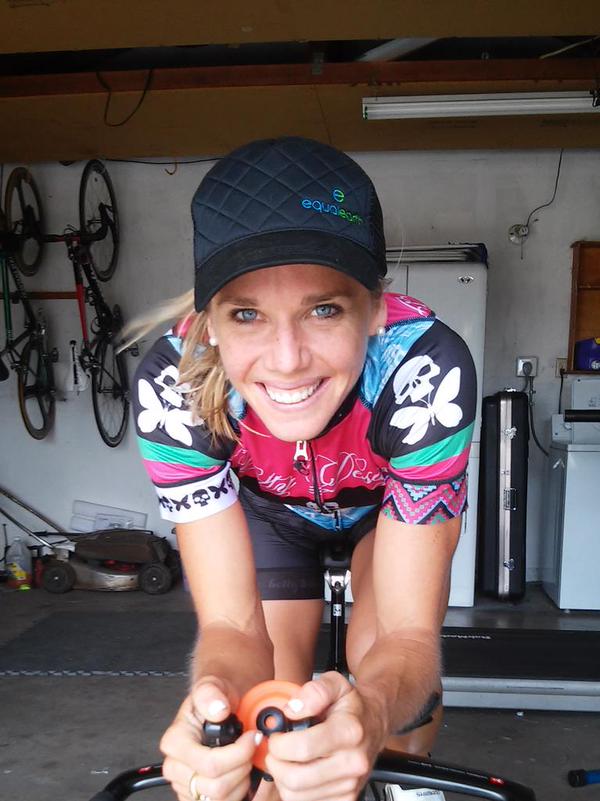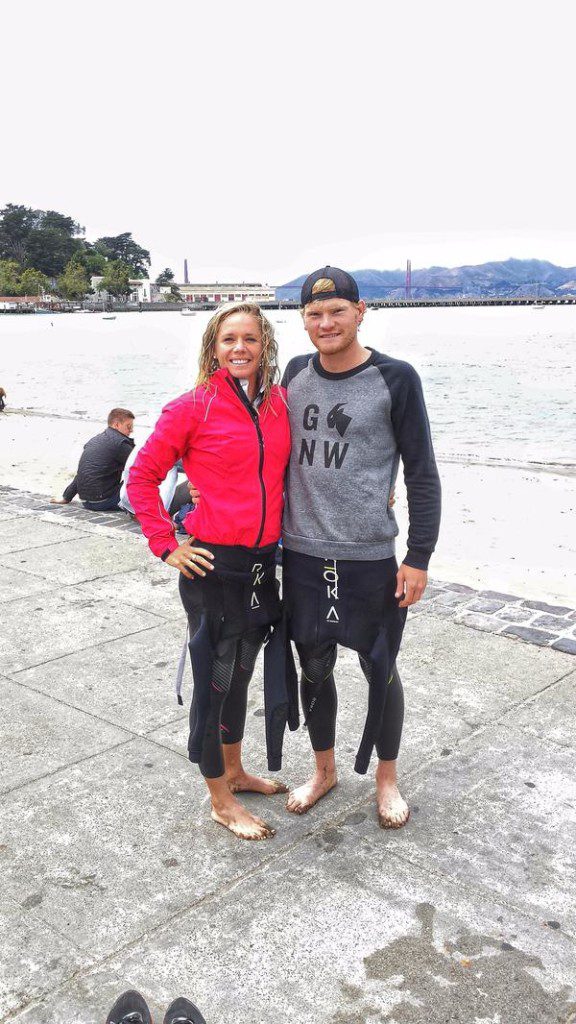Interview with power couple: Magali Tisseyre and Eric Lagerstrom


Taylor Ried: Congrats on the win at Escape from Alcatraz! When did you take the lead and what did that feel like? Both you and Andy Potts had the same run time and you only took the win by two seconds–how was that?
Eric Lagerstrom: It was a sprint! We came out of T2 together, battled back and forth on the hills and the sand, and I didn’t get past him in the sprint until about 50 metres from the line. It was incredible and the most exciting race I’ve been a part of.
I started getting more into non-drafting at the end of last year when I realized I wasn’t going to have enough points to get into the Olympic trials if I stayed on the trajectory I was on. I decided to race the Lifetime Series and try to make my name (and a living) in the sport rather than chase points. With the cancellation of that series and some recent run improvements, I’m doing some of both at the moment.
I’m back to a couple non-draft races, hopefully at the WTS level. I’ll also plan to do Beijing International at the end of the year, which I’m really looking forward to!

Taylor Reid: Magali, it looks like you had a good day in Alcatraz last weekend. How did the race unfold for you?
Magali Tisseyre: It was a tough one! I felt a little bit flat on Sunday but those girls pushed me to the best performance possible.
The swim in Alcatraz is known to be very cold and it requires good navigation skills. This year, the water was in the high 50’s, which was comfortable on race day. It also was relatively easy to navigate as it was not that choppy. The dive off the boat went very well and I hung on to a big lead pack for a little while. At one point, I lost the group and kept on sighting off the first few pink caps ahead. I felt good enough in the water and ran strong on the half mile into T1.
From what I heard the announcer say, I was about 1min40 down on the leaders out of the water and in 5th place I believe.
On the bike, it seemed I didn’t have the snap in my legs that I was hoping for, but I managed to catch Emily cocks early into the ride just as Mirinda Carfrae us both. I had to push very hard to stay with Mirinda and I am glad she was there, racing aggressively. I hammered the downhill and tried to nail the technical aspects of the course. I think that allowed me to stay in the game. Entering T2, Mirinda was about 15 seconds ahead.
Off the bike, again, it felt like some of the explosive strength required on that course was not there on Sunday. It felt like there was a level of intensity I could just not reach. The stairs were where I suffered the most. Even the first set of stairs were very slow for me but I just kept on pushing and trying to open up. It never happened on the run. I can’t complain about a 5th place in a strong field but I can say I am hungry to come back for more.
TR: You had a great start to the season winning Monterrey 70.3 but then you had some setbacks. How has that effect you coming into this race?
MT: There has indeed been a rough patch in the last few weeks. A couple of mechanicals and a dislocated rib in St Anthony’s that prevented me from racing St George. There were some hard moments there! I had to work hard for this not to affect my confidence heading into the race but it is good that I went for it.
TR: Next up is Mont Tremblant 70.3 in two weeks, on home turf. What will the next two weeks of training look like for you? Will you be heading up there to train in advance?
MT: I am spending some time in Portland now and training with my boyfriend Eric. I had the days of good recovery after the race and am now prepared to get back to work for three to four days before tapering back into Tremblant! I will arrive in Tremblant a week in advance and do some taper training there for sure.
TR: How was it to race with Eric and support each other going into the race?
MT: It was great to race with Eric. We pre-rode the bike course together, swam in the Ocean to test the waters and it was reassuring to have him there just like he always is in training! I must also say, I got my smile back in the last few meters of the race when someone yelled that Eric had won. It was great to be there for his big day and it did give me some great emotions even on a day my own race did not go the way I wanted it to. On Monday and Tuesday, we got to visit San Francisco and it was wonderful.
TR: You switched from your former coach Lance Watson to Paulo Sousa last year. How has the move been and what is the biggest change you notice in terms of training between their two approaches? It certainly seems to be working for you!
MT: Results starting coming pretty quickly after the switch. Paulo brought me back from injury. We approached the problem from every angle. Finding the right running shoe, working with physio Gino Cinco and dosing the training so that my body could recover from the injury properly. Only when I was ready to race without risk of setting things back, did we decide to return to competition.
Paulo’s training helped me reach a new level of performance. The main difference here is that Paulo’s training is based on respecting a logical progression, applying a consistent work load and letting the body adapt. Training it step by step and respecting the time the body needs to adapt to the load. There are no EPIC days in Paulo’s schedule, but the workload is relentless. Paulo really has a rational, evidence based approach to training and it works.
